Abstract
Evidence of dual atrioventricular nodal pathwats (a sudden jump in H1-H2 at critical A1-A2 coupling intervals) was shown in 41 out of 397 patients studied with atrial extrastimulus techniques. In 27 of these 41, dual pathways were demonstrable during sinus rhythm, or at a cycle length close to sinus rhythm (CL1). In the remaining 14, dual pathways were only demonstrated at a shorter cycle length (CL2). All patients with dual pathways at cycle length who were also tested at cycle length (11 patients) had dual pathways demonstrable at both cycle lengths. In these 11 patients both fast and slow pathway effective refractory periods increased with decrease in cycle length. Twenth-two of the patients (54%) had either an aetiological factor strongly associated with atrioventricular nodal dysfunction or one or more abnormalities suggesting depressed atrioventricular nodal function. Dvaluation of fast pathway properties suggested that this pathway was intranodal. Seventeen of the patients had previously documented paroxysmal supraventricular tachycardia (group 1). Eight patients had recurrent palpitation without documented paroxysmal supraventricular tachycardia (group 2), and 16 patients had neither palpitation nor paroxysmal supraventricular tachycardia (group 3). Echo zones were demonstrated in 15 patients (88%) in group 1, no patients in group 2, and 2 patients (13%) in group 3.
Full text
PDF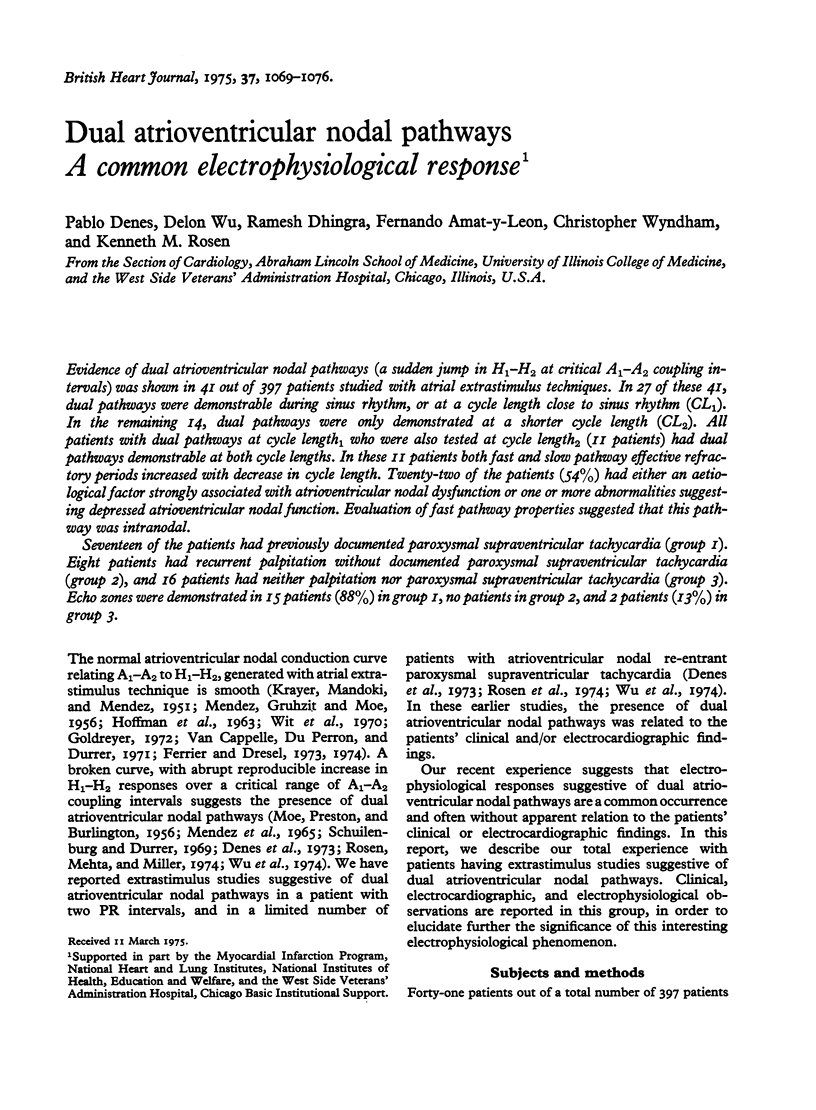
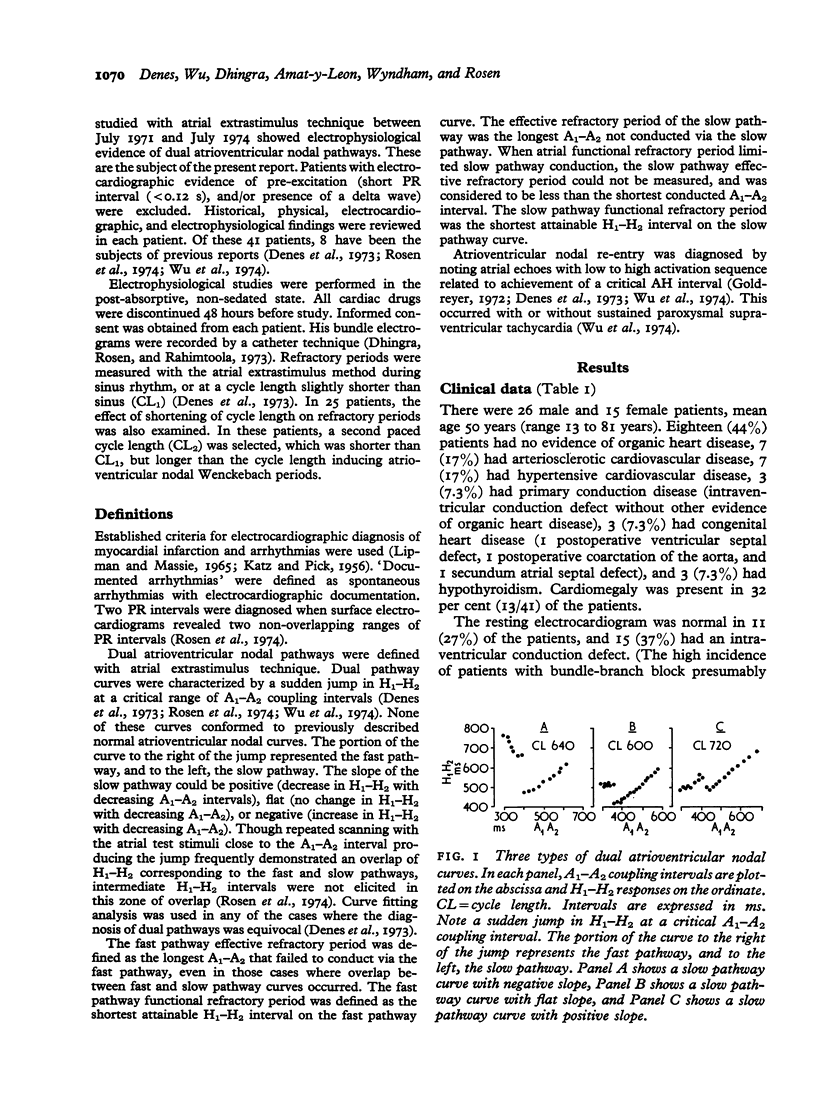
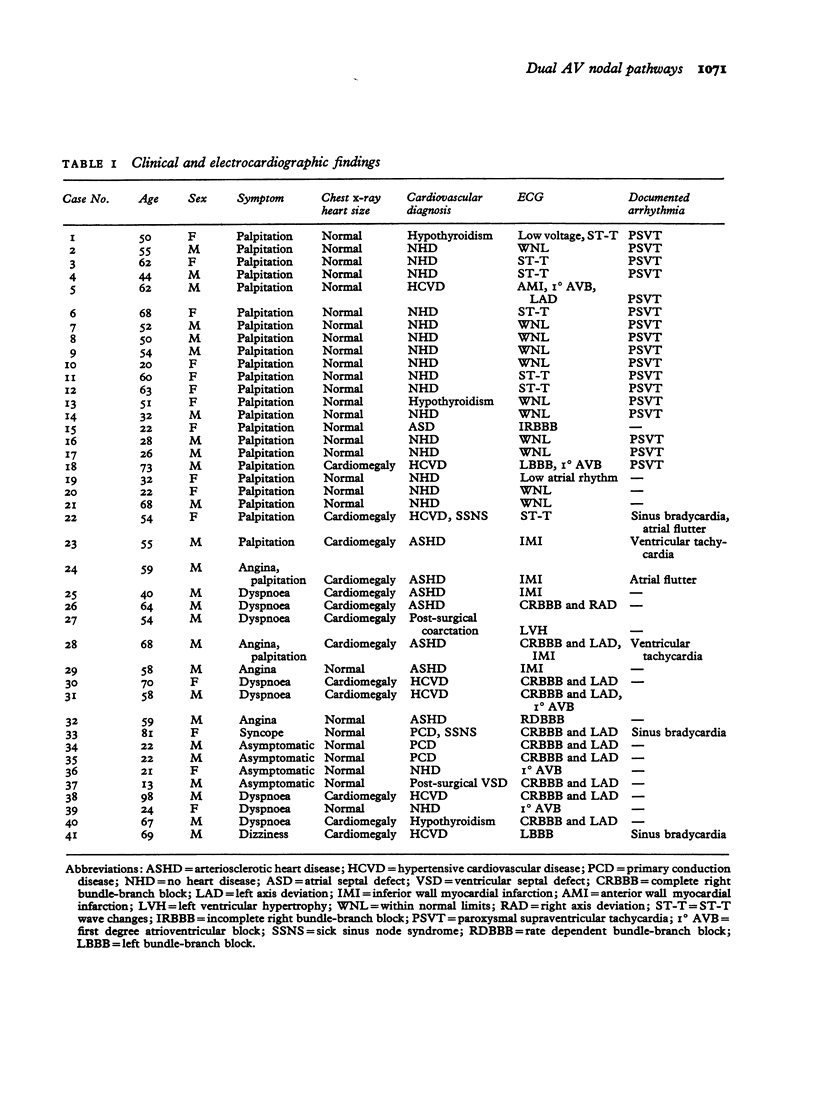
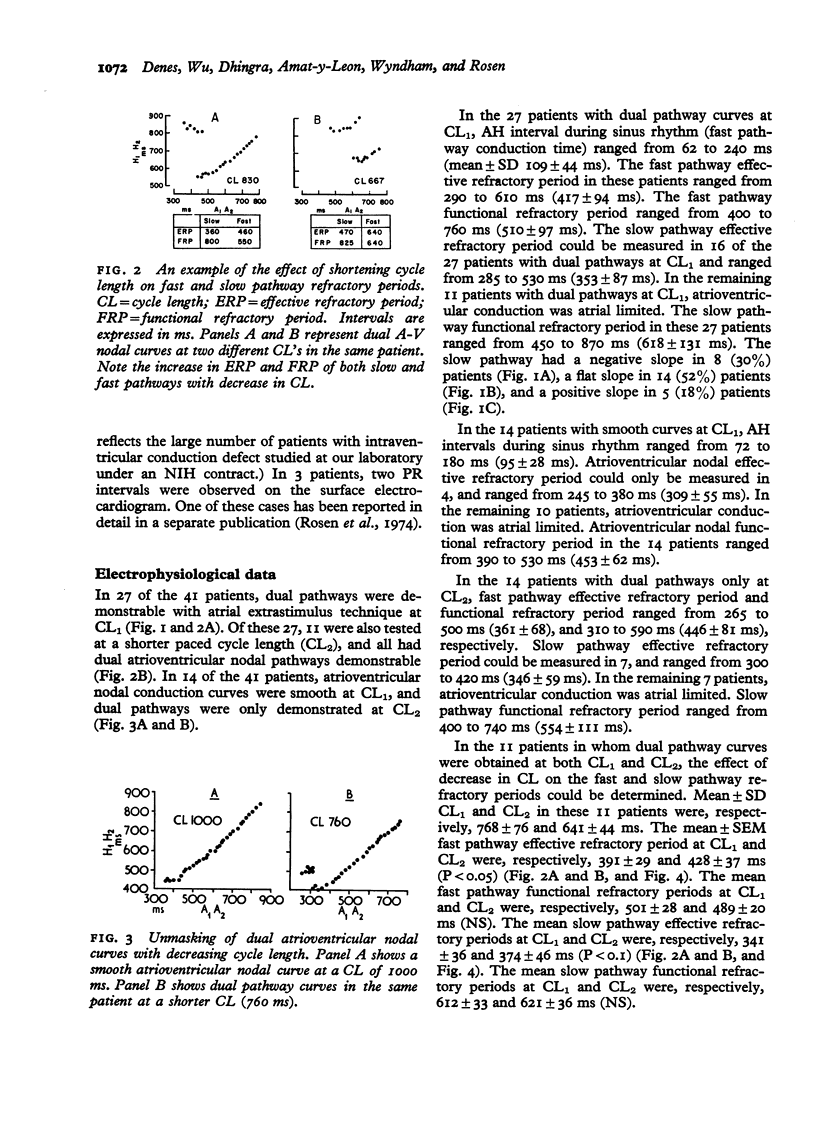
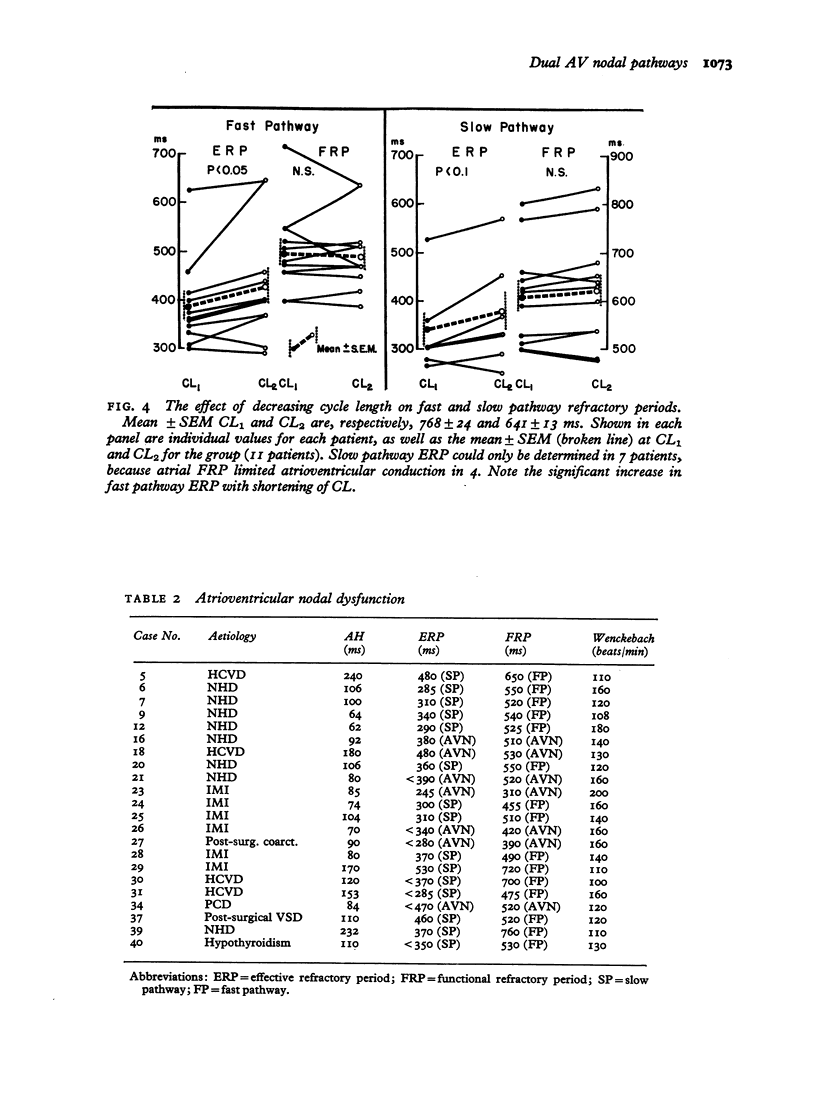
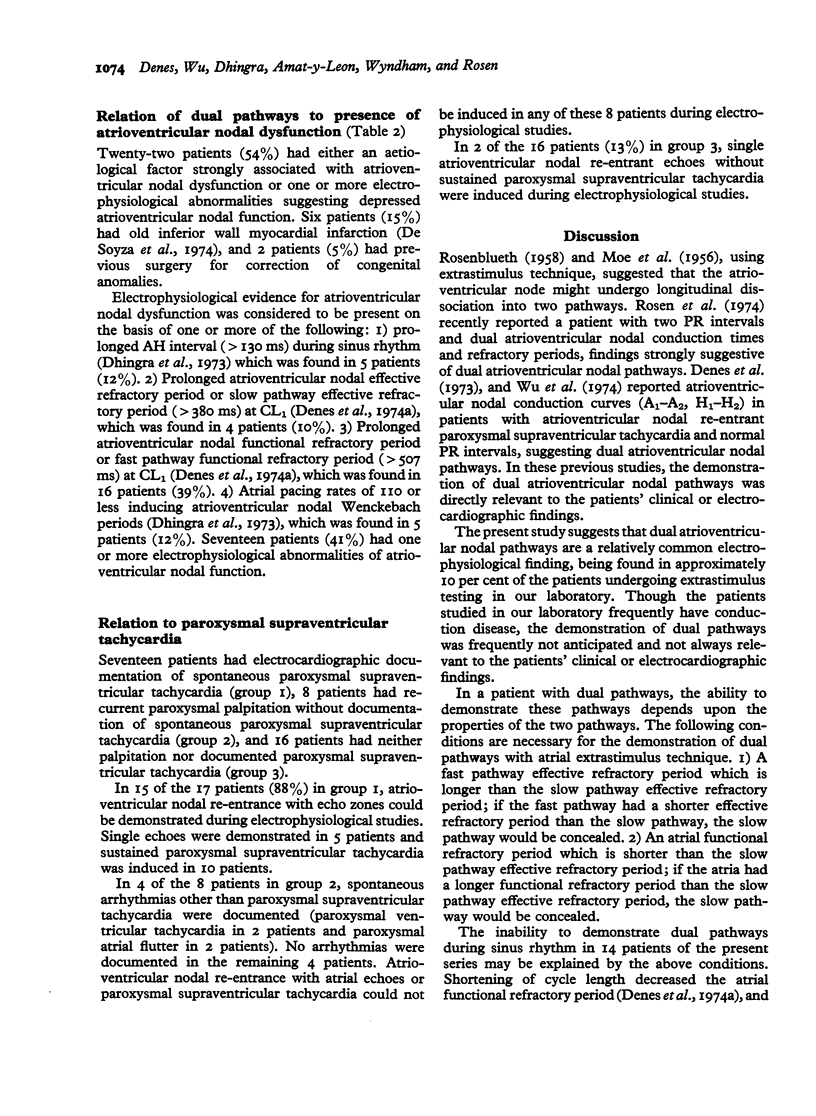
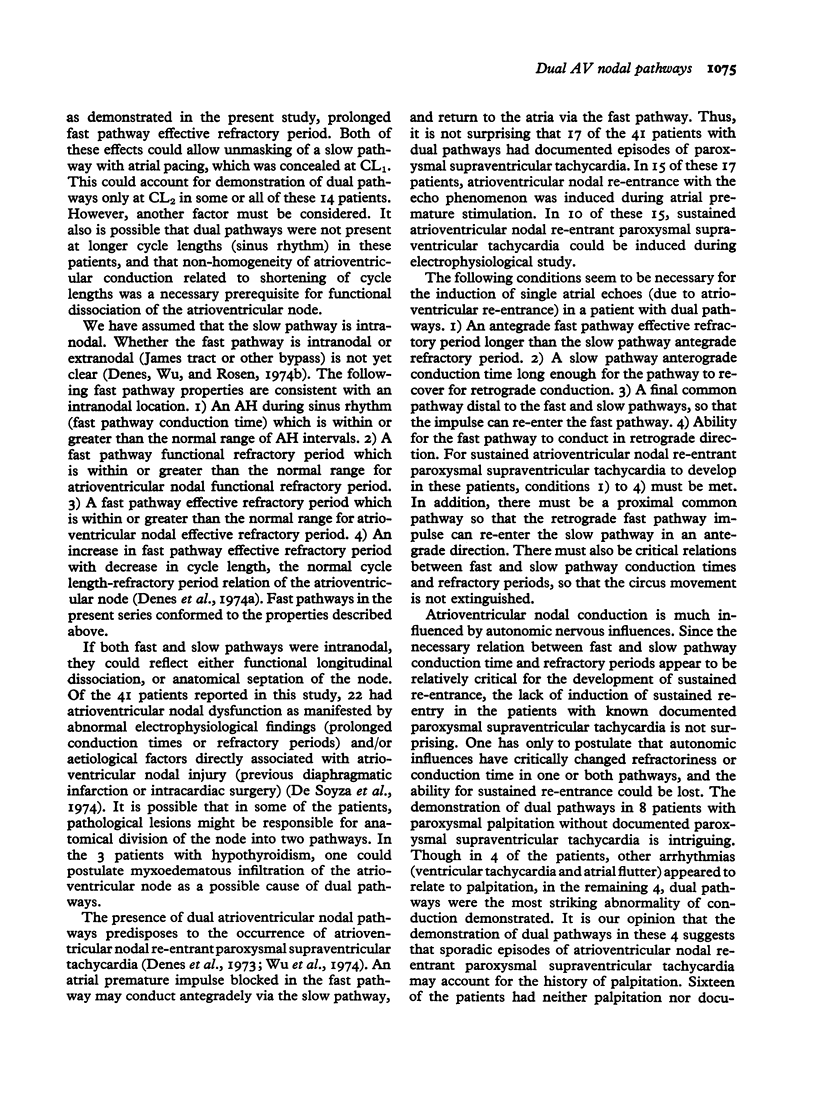
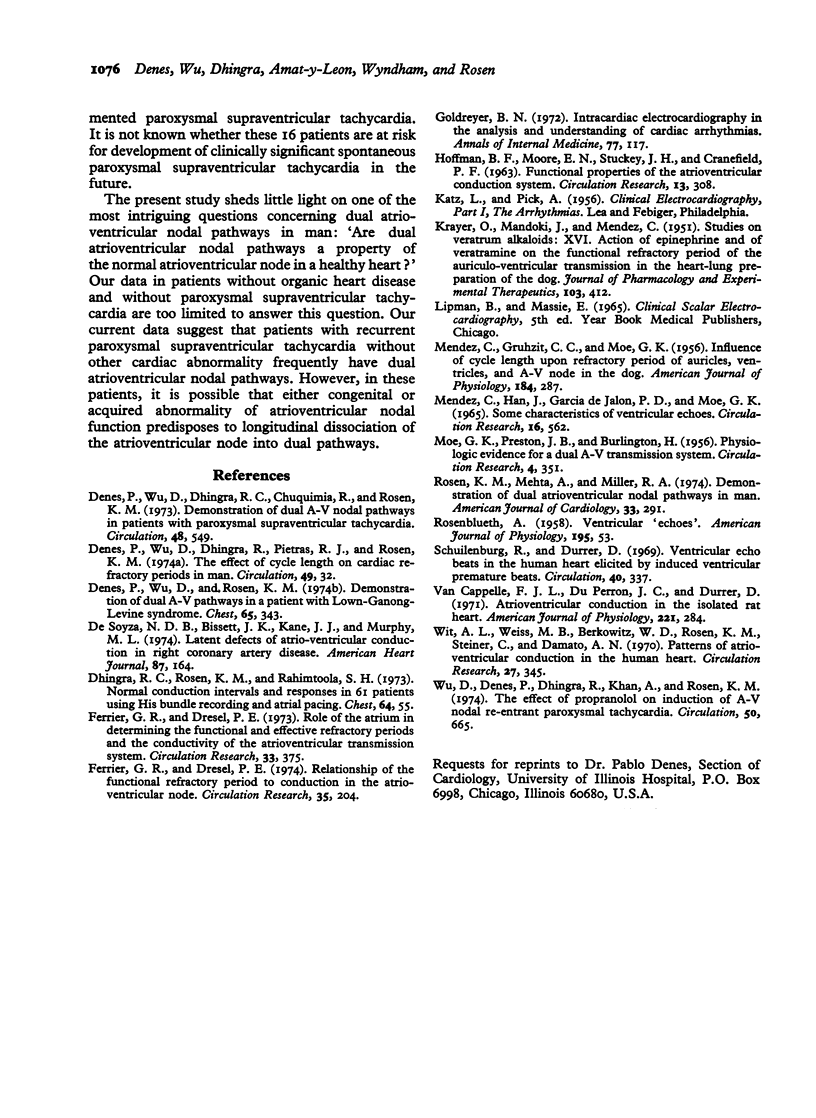
Selected References
These references are in PubMed. This may not be the complete list of references from this article.
- De Soyza N. D., Bissett J. K., Kane J. J., Murphy M. L. Latent defects of atrioventricular conduction in right coronary artery disease. Am Heart J. 1974 Feb;87(2):164–169. doi: 10.1016/0002-8703(74)90036-2. [DOI] [PubMed] [Google Scholar]
- Denes P., Wu D., Dhingra R. C., Chuquimia R., Rosen K. M. Demonstration of dual A-V nodal pathways in patients with paroxysmal supraventricular tachycardia. Circulation. 1973 Sep;48(3):549–555. doi: 10.1161/01.cir.48.3.549. [DOI] [PubMed] [Google Scholar]
- Denes P., Wu D., Dhingra R., Pietras R. J., Rosen K. M. The effects of cycle length on cardiac refractory periods in man. Circulation. 1974 Jan;49(1):32–41. doi: 10.1161/01.cir.49.1.32. [DOI] [PubMed] [Google Scholar]
- Denes P., Wu D., Rosen K. M. Demonstration of dual A-V pathways in a patient with Lown-Ganong-Levine syndrome. Chest. 1974 Mar;65(3):343–346. doi: 10.1378/chest.65.3.343. [DOI] [PubMed] [Google Scholar]
- Dhingra R. C., Rosen K. M., Rahimtoola S. H. Normal conduction intervals and responses in sixty-one patients using His bundle recording and atrial pacing. Chest. 1973 Jul;64(1):55–59. doi: 10.1378/chest.64.1.55. [DOI] [PubMed] [Google Scholar]
- Ferrier G. R., Dresel P. E. Role of the atrium in determining the functional and effective refractory periods and the conductivity of the atrioventricular transmission system. Circ Res. 1973 Oct;33(4):375–385. doi: 10.1161/01.res.33.4.375. [DOI] [PubMed] [Google Scholar]
- Goldreyer B. N. Intracardiac electrocardiography in the analysis and understanding of cardiac arrhythmias. Ann Intern Med. 1972 Jul;77(1):117–136. doi: 10.7326/0003-4819-77-1-117. [DOI] [PubMed] [Google Scholar]
- HOFFMAN B. F., MOORE E. N., STUCKEY J. H., CRANEFIELD P. F. FUNCTIONAL PROPERTIES OF THE ATRIOVENTRICULAR CONDUCTION SYSTEM. Circ Res. 1963 Oct;13:308–328. doi: 10.1161/01.res.13.4.308. [DOI] [PubMed] [Google Scholar]
- KRAYER O., MANDOKI J. J., MENDEZ C., RUBIO G. R. Studies on veratrum alkaloids. XVI. The action of epinephrine and of veratramine on the functional refractory period of the auriculo-ventricular transmission in the heart-lung preparation of the dog. J Pharmacol Exp Ther. 1951 Dec;103(4):412–419. [PubMed] [Google Scholar]
- MENDEZ C., GRUHZIT C. C., MOE G. K. Influence of cycle length upon refractory period of auricles, ventricles, and A-V node in the dog. Am J Physiol. 1956 Feb;184(2):287–295. doi: 10.1152/ajplegacy.1956.184.2.287. [DOI] [PubMed] [Google Scholar]
- Rosen K. M., Mehta A., Miller R. A. Demonstration of dual atrioventricular nodal pathways in man. Am J Cardiol. 1974 Feb;33(2):291–294. doi: 10.1016/0002-9149(74)90292-6. [DOI] [PubMed] [Google Scholar]
- Schuilenburg R. M., Durrer D. Ventricular echo beats in the human heart elicited by induced ventricular premature beats. Circulation. 1969 Sep;40(3):337–347. doi: 10.1161/01.cir.40.3.337. [DOI] [PubMed] [Google Scholar]
- Van Capelle F. J., Du Perron J. C., Durrer D. Atrioventricular conduction in isolated rat heart. Am J Physiol. 1971 Jul;221(1):284–290. doi: 10.1152/ajplegacy.1971.221.1.284. [DOI] [PubMed] [Google Scholar]
- Wit A. L., Weiss M. B., Berkowitz W. D., Rosen K. M., Steiner C., Damato A. N. Patterns of atrioventricular conduction in the human heart. Circ Res. 1970 Sep;27(3):345–359. doi: 10.1161/01.res.27.3.345. [DOI] [PubMed] [Google Scholar]
- Wu D., Denes P., Dhingra R., Khan A., Rosen K. M. The effects of propranolol on induction of A-V nodal reentrant paroxysmal tachycardia. Circulation. 1974 Oct;50(4):665–677. doi: 10.1161/01.cir.50.4.665. [DOI] [PubMed] [Google Scholar]


